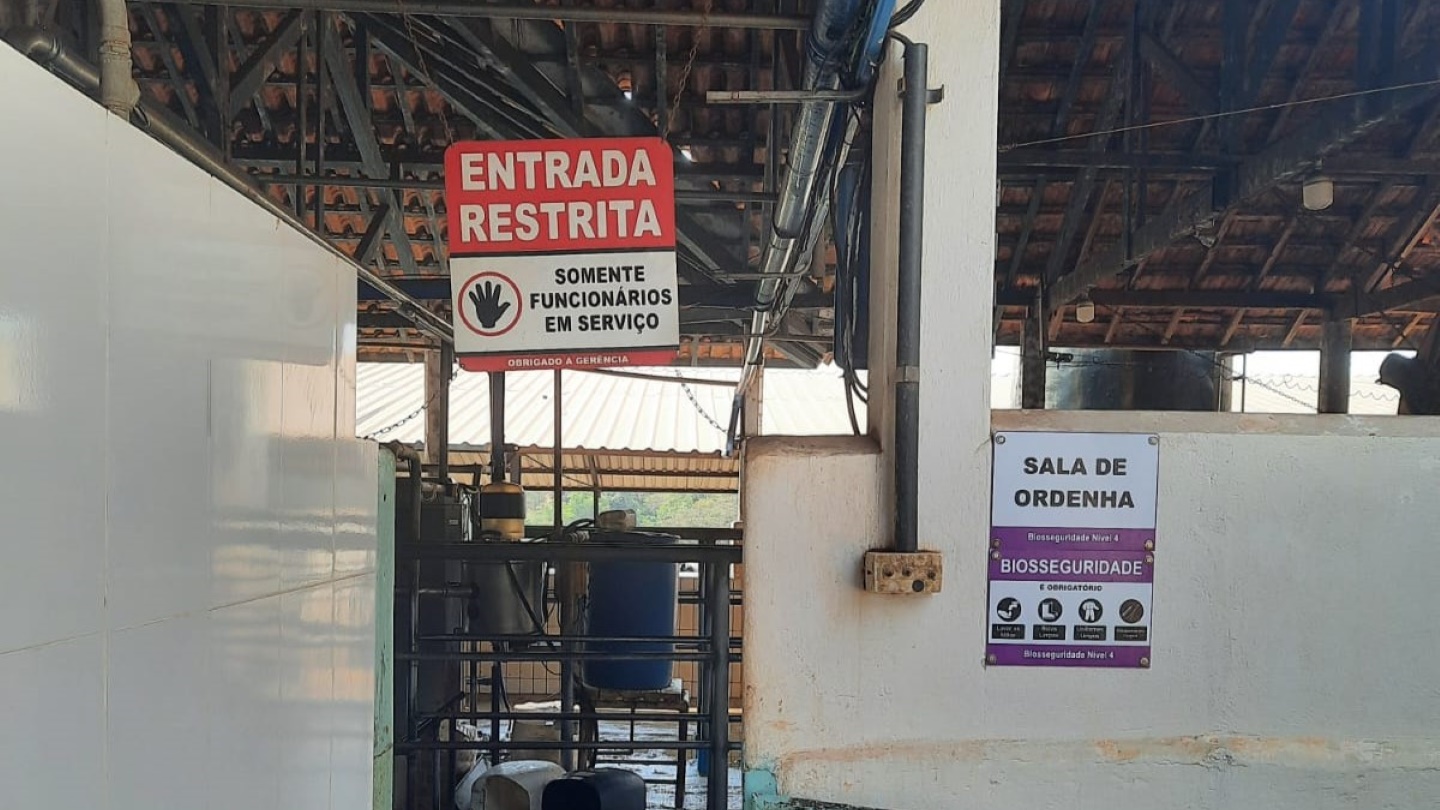Brazil boosts biosecurity in dairy farms
Did you know that Brazil has more cattle than people? No less than 238.6 million heads, and such a huge herd requires solid prevention plans. That’s why we partnered with state-led Brazilian Agricultural Research Corporation (Embrapa) to help farmers and local authorities set best practices in biosecurity for dairy farms. They can now enhance their production processes, avoid losses, and more: offer more transparency to their customers. All assessed by an official quality certification – a biosecurity stamp.

“The idea of establishing a new quality certification based on biosecurity protocols came in dair2021 when we started working with two of the country’s biggest dairy producers,” explains Eduardo Pires, our Ruminant technical manager in Brazil. Together, the farms The Colorado and Santa Luzia produce around 150,000 liters of milk every day. But further support was needed to enhance milk production; cows should urgently receive less medication, and the milk should contain less residues. These farms wanted to ensure customers got even better dairy products.
But producing such huge volumes is not easy. Farmers need to manage staff and closely supervise every step of everyday operations. They need clear protocols to prevent disease, reduce the use of treatments, including antibiotics, avoid losses and reduce their footprint. They also need clarity on how to stick to the highest standards on a daily basis – and for these reasons, improving biosecurity protocols is fundamental.
Reinforcing biosecurity measures by improving 140 areas
Together with the Colorado Farm and Embrapa, we identified 140 critical points of attention in dairy production that would help reinforce biosecurity. We assigned actions for more animal care, team vigilance and to prevent contamination, among others.

Finally, our teams shared their expertise to implement the required changes. Adherence to the proposed protocols is checked by high-standard audits – and compliance leads to an official certification. Farms get then a biosecurity stamp, a public quality acknowledgment from both the government and the livestock industry.
“As a company, we believe the health of animals, humans and the environment are interconnected,” highlights Eduardo. “For us, prevention and advanced diagnostics based on data are essential for the progress of dairy farming. By promoting good practices, we enhance the profitability of local producers. We also give consumers the assurance that they are buying high-quality products. We ensure both human and animal health at once. Together with Embrapa, we made it happen."
Footprint over the equivalent to 14,000 Olympic swimming pools of milk
Thanks to our support, Brazilians can now easily verify whether the milk they buy at the local supermarkets is safe and compliant with the highest production standards worldwide.
“That’s an enormous contribution. Only last year, Brazil produced 35,4 billion liters of milk, an amount that could fill around 14,000 Olympic swimming pools,” highlights Eduardo.
The staff of The Colorado and Santa Luzia farms can’t agree more. They were the first to get the biosecurity stamp and benefited from reducing antibiotics in treatments for clinical mastitis, an infection of the mammary gland affecting lactating cows, and tick-borne disease, a blood parasite infection spread by ticks and flies. In addition, The Colorado Farm witnessed an average reduction of 40% of antibiotics in the treatment of dry cows, a period when the cow isn’t being milked for a couple of months.
Mauricio Coelho and Mateus Moreira from Santa Luzia Farm share how this biosecurity certificate helps them in their daily work.
Related Content

Biosecurity in farms: what’s this all about?

China Pioneers Biosecurity Report Against ASF



